Travel to Jordan: From Petra to the Borderlands, A Journey That Opened My Eyes
- Kimberly Kephart

- 5 days ago
- 10 min read
Updated: 6 hours ago
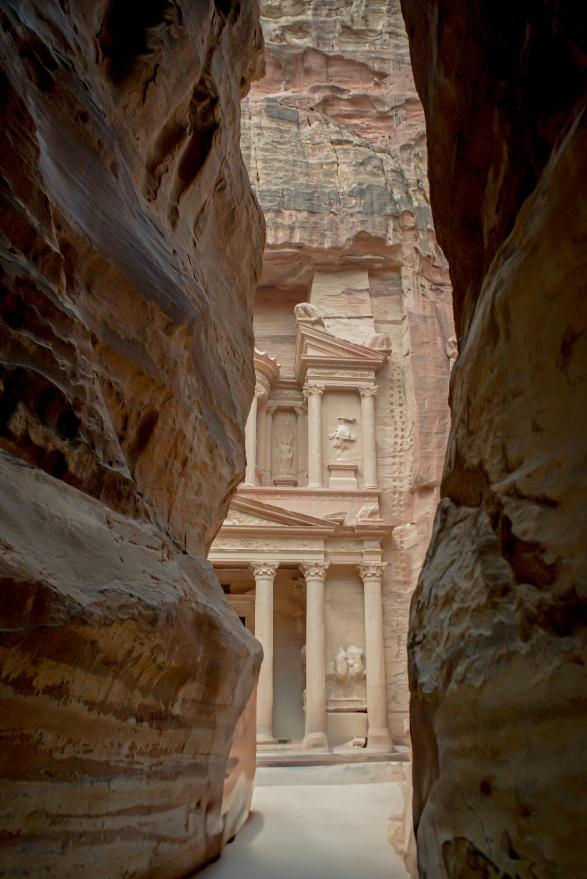
How One Podcast Sparked a Journey of Purpose and Discovery
It all started one quiet summer evening in my kitchen, a moment that seemed ordinary at the time but ended up shifting something deep within me. I had “Going Places” by Yulia Denisyuk playing in the background—one of those podcasts that speaks right to your curiosity—and her guest, Amelia Bilbeisi, was sharing stories about producing world-renowned olive oil in Jordan. I paused mid-stir at the stove, just listening. Her words painted more than just a place; they painted people. Real lives. Deep roots. Purpose.
I’d known about Jordan, sure—Petra, the rose-red city; Wadi Rum, with its sweeping Martian landscapes. But this was different. This was human. That podcast lit a spark. I didn’t know it yet, but that was the moment I decided I needed to travel to Jordan, not just to see its beauty, but to feel its heartbeat.
Not long after, my husband—who must have caught wind of my growing fascination—surprised me with a solo birthday trip to Jordan through G Adventures. He doesn’t always do grand gestures, but this one landed. I felt seen. And I was stoked.
This wasn’t just a trip. It was a reminder of why I travel: not to collect places, but to connect with people. Travel to Jordan became more than a birthday gift—it became a lens through which I saw the power of human connection.
I’m sharing my itinerary with you because Jordan isn’t just beautiful—it’s bold, layered, and full of quiet lessons that unfold when you take the time to notice.
When I shared my location on Google Maps, my dad texted: “WHAT THE HELL ARE YOU DOING THERE?” I got it. Jordan, like much of the region, is often misunderstood. But that’s precisely why I want to talk about it.
Because we, the travelers, the wanderers, the ones lucky enough to go—we are the ones who can rewrite the narrative. We get to say: There is more here than conflict. There is life here. And it’s beautiful. Let’s start at the beginning.
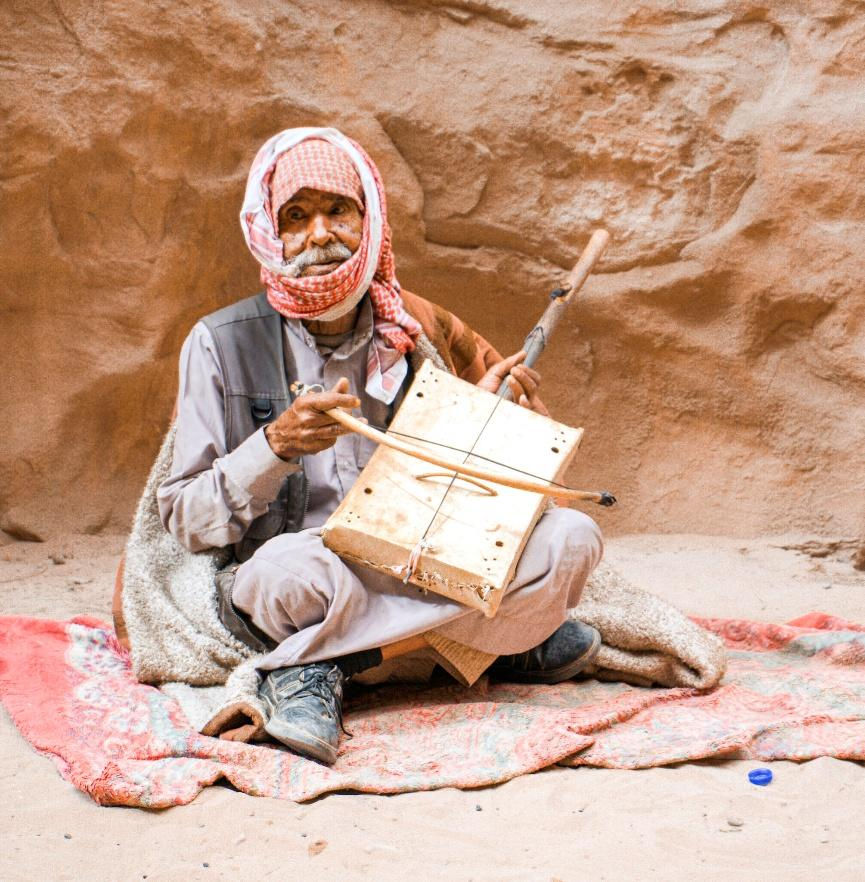
What to Know Before You Travel to Jordan: Visas, Currency, and Timing
Fast Facts About Jordan
Major Airport: Queen Aliah International Airport, Amman
Currency: Jordanian Dinar (JOD) 1 JOD = 1.41 USD (as of 2025)
Language: Arabic, but English is widely spoken at popular sites
Visa: U.S. citizens qualify for Visa on Arrival. Many nationalities can apply via the Jordan Pass (group trip travelers may not need this).
Best Time to Go: Spring (late March–May) and Fall (September–November)
Flights: Etihad Airways offers connections from Amman to Seoul on most weekdays.
Itinerary Snapshot
Route: Amman—Jerash—Ajloun Castle—Beit al Khayrat (Souf)—Umm Qais—Dana—Petra—Wadi Rum—Aqaba—Dead Sea
Hotel on Arrival: Hotel Myna Tysche, Amman
Exploring Jerash, Ajloun Castle, and the Women of Souf
Day 1: Jerash, Ajloun Castle, Beit Khayrat in Souf, and Umm Qais
We began our journey heading north from Amman, starting at the ancient Roman ruins of Jerash. Its colonnaded streets and amphitheater felt like a step back in time. The city of Jerash is one of the best-preserved examples of a Greco-Roman city outside of Italy. You can still walk along colonnaded streets, see ancient fountains, step into amphitheaters with near-perfect acoustics, and marvel at temples that have stood for over two millennia. Unlike many other Roman sites, much of Jerash’s original layout is intact, making it feel like a living museum.
For lunch, we headed to the village of Souf and Beit Khayrat Souf, a women-owned café and social enterprise in a 19th-century home. Founded to combat female unemployment, it's supported by the Planeterra Foundation and creates economic opportunities for local women.
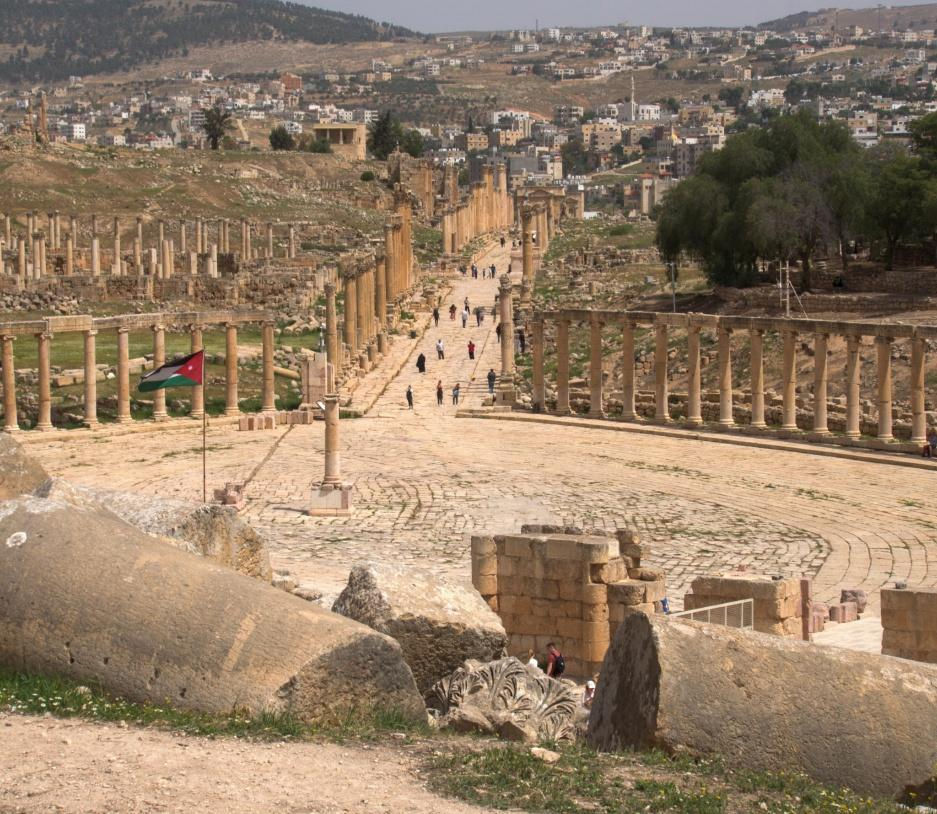
We were taught how to make Maqluba, which is translated to “upside down” in Arabic. It’s named for the dramatic moment at the end of cooking when the pot is flipped onto a large tray or serving dish, revealing a layered, savory “cake” of rice, vegetables, and meat. That flip is the moment—and it’s often met with applause, gasps, and camera phones.
Then we visited Ajloun Castle, a 12th-century fortress with sweeping views and history tied to Crusader defense. Ajloun Castle was built in 1184 by Izz al-Din Usama, a general in the army of the famed Muslim leader Saladin (Salah ad-Din al-Ayyubi). It was part of a defensive network to protect the region from Crusader incursions and to guard important trade routes between Damascus and the south.
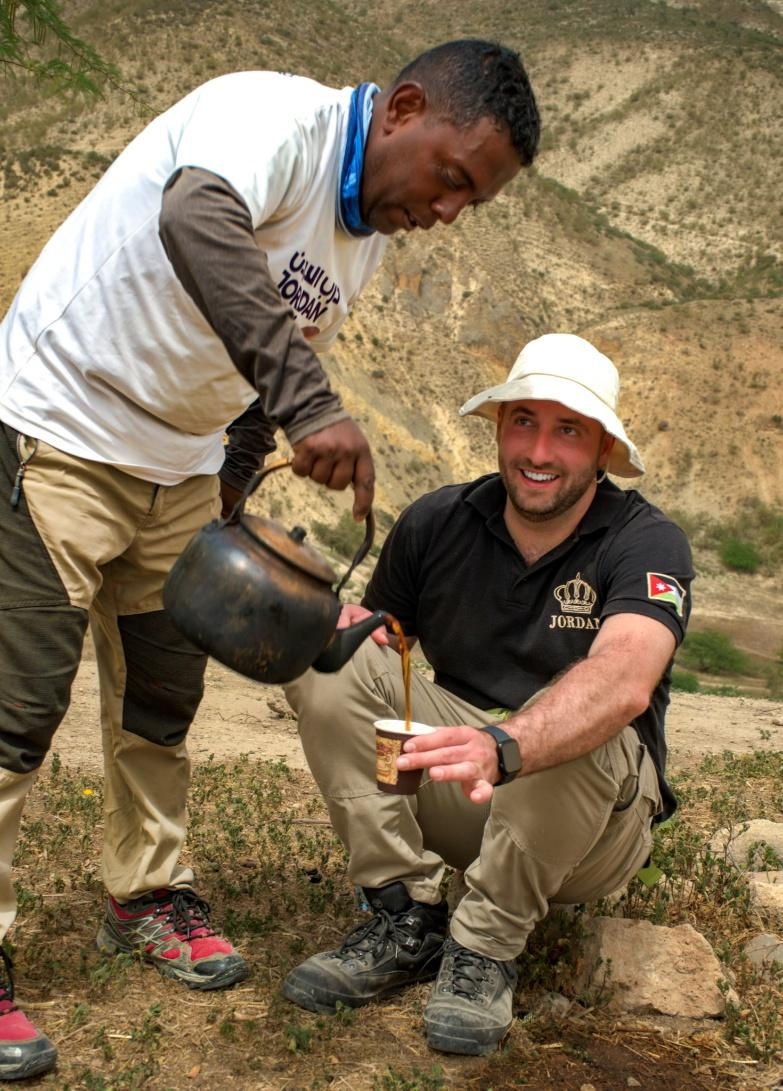
That alone makes it powerful—it wasn’t just a royal residence or decorative fortress. Ajloun was built with purpose, to resist invasion and protect people.
Tip: stop for "Bedouin Starbucks" outside—coffee for 1 JOD served by the friendliest man.
We stayed that night at Beit al Baraka in Umm Qais, a guesthouse run by Baraka Destinations. Locals cooked our meals, told stories, and showed us how sustainable tourism can uplift an entire community.
Hiking in Umm Qais: Ancient Lands, Border Views, and Local Wisdom
Day 2: Hiking with Farag in Umm Qais
Umm Qais, near the Golan Heights, was one of my favorite stops. We hiked with Farag, a storyteller and guide who once hosted the King of Jordan. Our trail was the start of the Jordan Trail near the Wadi Arab Dam.
Because of its location, we brought our passports. At any moment, we could be checked by Border Patrol. The peaceful landscape of rolling hills and farmland was cinematic. We lunched overlooking Wadi Arab Dam while Farag brewed tea over a fire.
That night, he welcomed us into his home for dinner. I asked him what he wished travelers knew about hiking in Jordan. He said, “That it’s safe. We are ready to welcome people back.”
The Dana Biosphere Reserve: Jordan’s Ecological Gem
Day 3: Dana Biosphere Reserve
Dana is Jordan’s largest nature reserve, spanning four ecological zones. We hiked part of the Wadi Dana Trail, which descends from Dana Village through stunning canyon landscapes.
We only went a couple of miles down but were rewarded with sweeping views. The uphill return nearly did me in, but a lemon mint smoothie from a village vendor saved the day.
We stayed at Dana Eco Lodge—highly recommend for the views alone.
A Day in the Life of a Jordanian Shepherd: Goats, Generosity, and Gratitude
Day 4: I Became a Shepherd in Dana
Two brothers, Fadi and Shadi, led us through their backyard—goat herding paths along Dana’s cliffs. We walked for 3 miles to a spot, with goats next to us. Learned how to milk and shear a goat. We had a shepherd’s lunch: fire-roasted potatoes, onions, hummus, and pita. Rustic. Delicious. Unforgettable.
It was here that we learned about how shepherds thrive on the land. It was remarkable to be let in like this!
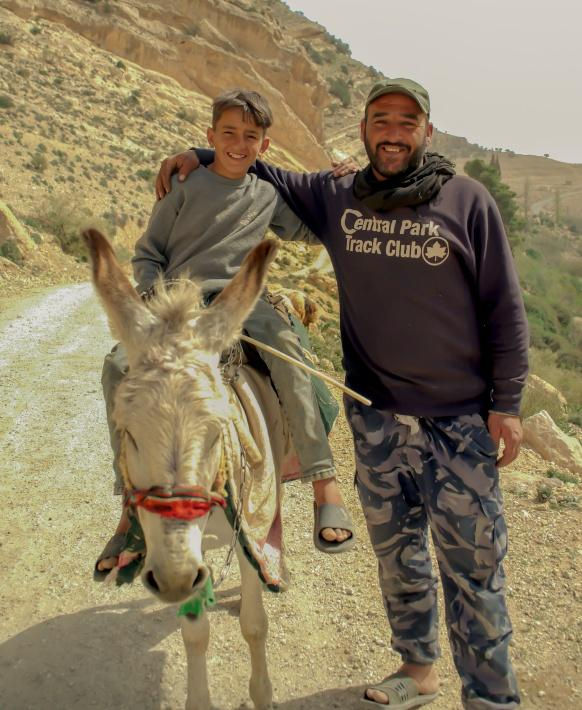
Goats and sheep are essential sources of income, food, and self-sufficiency. In regions like the Dana Biosphere Reserve, Umm Qais, and Wadi Rum, families rely on these animals for:
Milk (to make yogurt, labneh, jameed)
Wool
Meat
Even manure for fuel or fertilizer
When someone gets their first goat, they’re not just getting an animal—they’re starting a micro-economy. It’s the cornerstone of a small, self-sustaining enterprise, especially in areas where formal jobs may be scarce or seasonal.
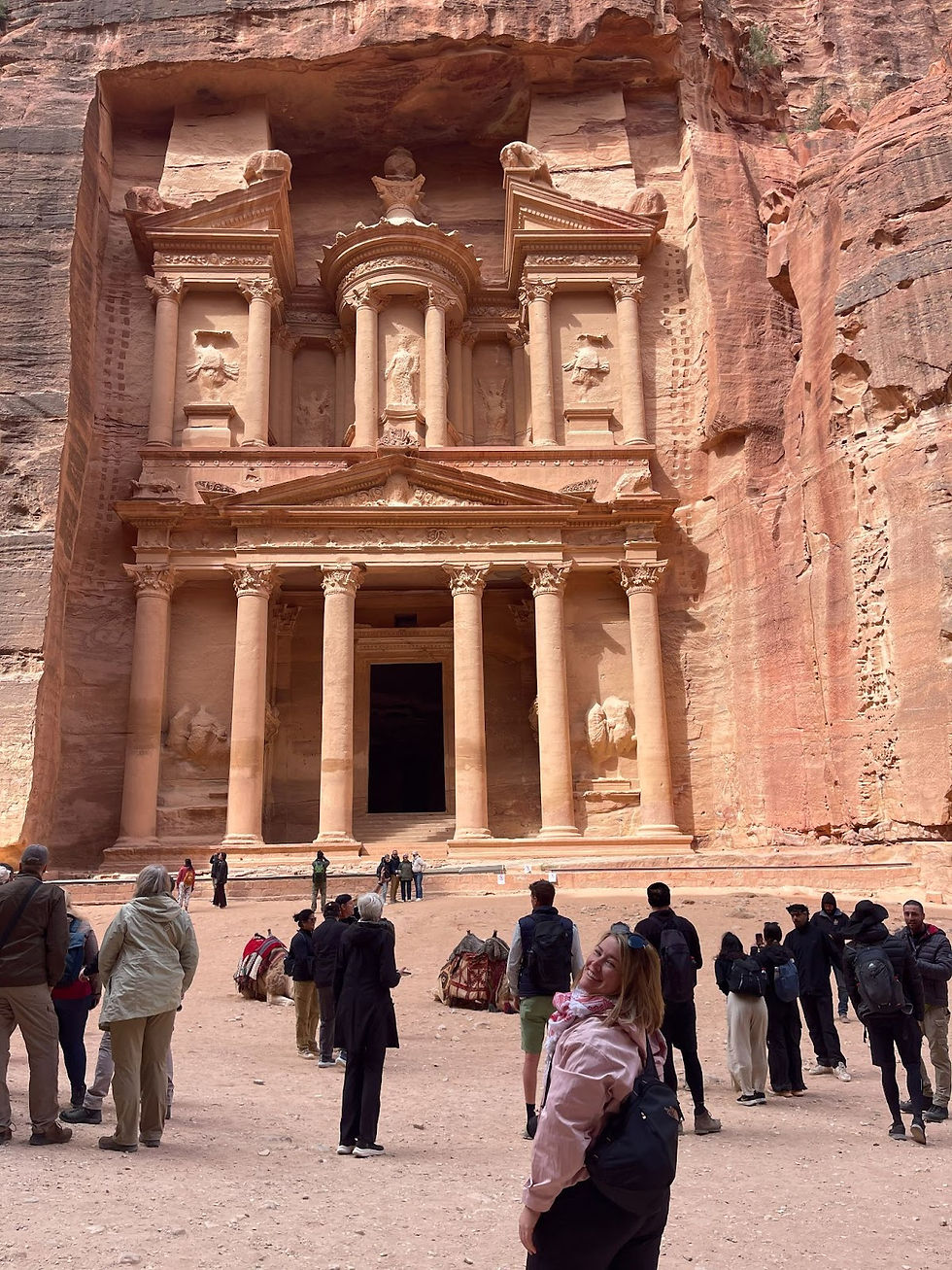
Petra – The Rose-Red City That Lives Up to the Hype
Day 5: Petra – The Rose-Red City
We arrived early to beat a storm and entered Petra through the Siq. That first glimpse of the Treasury? Absolutely surreal.
Petra was the capital of the Nabateans—expert traders who carved their city into the cliffs more than 2,000 years ago. We hiked the back trail to the Monastery with falafel wraps in hand. It was quiet, scenic, and the vendors along the way were kind and respectful.
The view from the Monastery was a highlight. We continued to Little Petra and encountered Bedouin families who would stop us to talk to us. They were so excited to meet us.
This hike gave us sweeping views over the Jordan Valley. I kept thinking, "I’ll remember this forever."
Wadi Rum: Bedouin Traditions and Martian Landscapes
Day 6: Wadi Rum – Martian Landscapes and Bedouin Traditions
Wadi Rum looks like Mars with camels. After checking into Harb Eco Camp, we explored by 4x4, stopping at old railway tracks and rock formations. We stopped at a Bedouin camp and learned all about their lives.
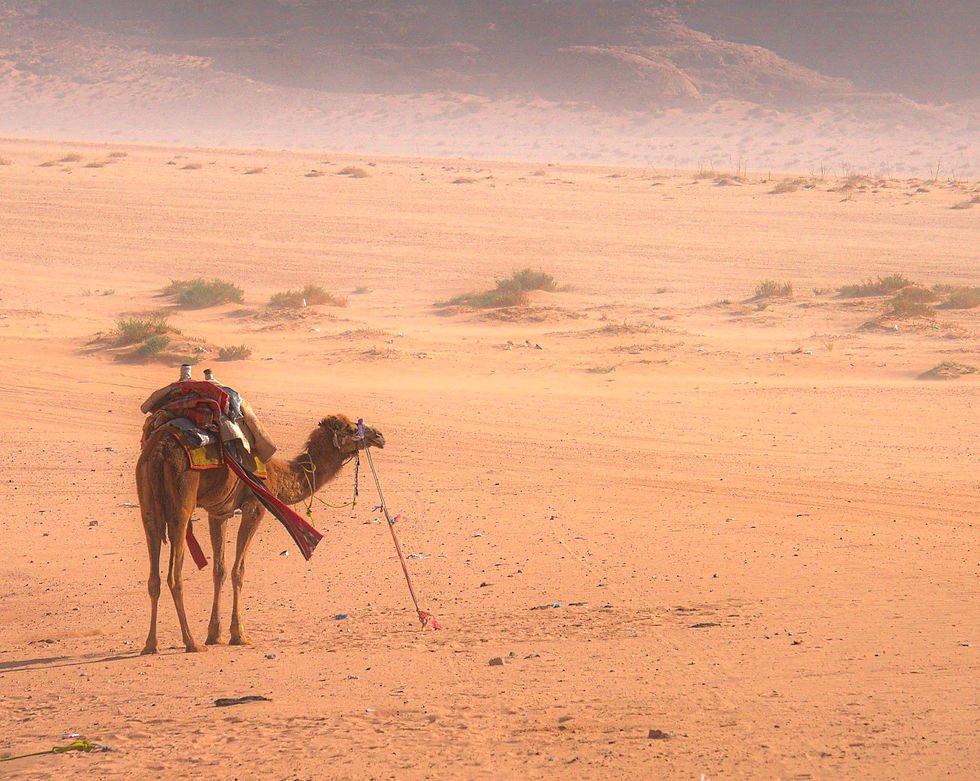
As the sun dipped below the red cliffs of Wadi Rum, one of the Bedouin hosts, Mohammed, pulled out a Rababa—a one-stringed instrument passed down through generations. He played a slow, mournful melody while we looked on. The sound floated over the sand like wind. It wasn’t a performance. It was memory in motion.
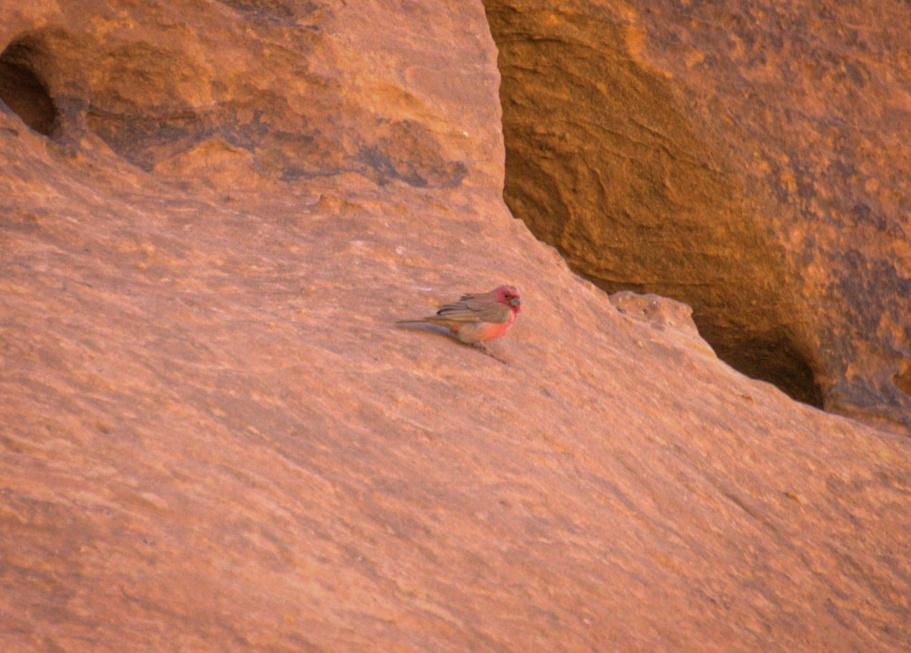
We packed up to leave, and as we did, our guide told us to pay attention to the birds, it’s often that you’ll find the Sinai rosefinch fluttering around. Just then, one landed on the rocks in front of us. It was quite a beautiful moment.
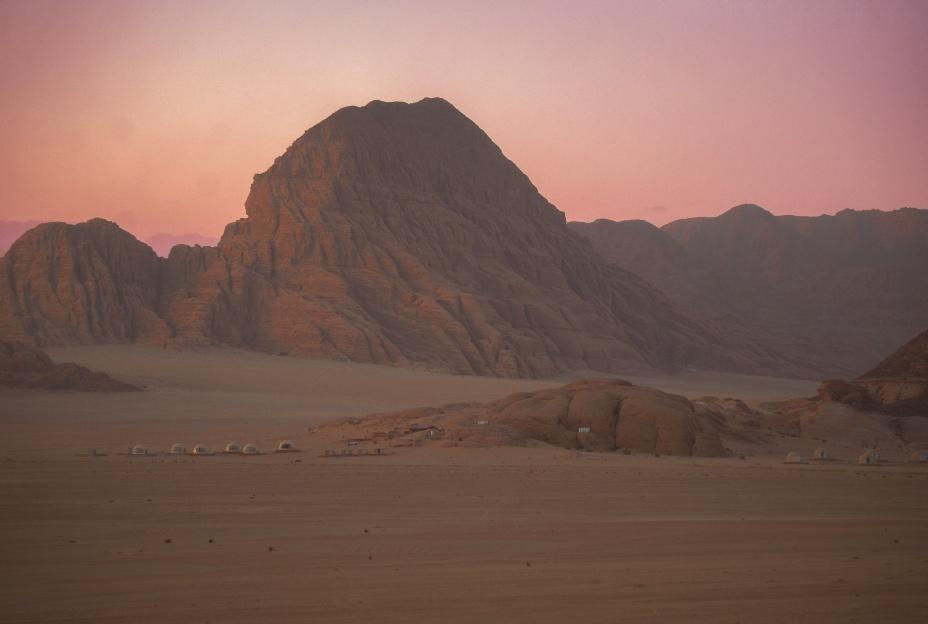
Dinner was Zarb—meat and veggies slow-cooked underground, and what a grand way to eat a dinner. Watching this meal come out of the desert sand was something else. The team at our camp had let this cook for 8 hours underground.
Afterwards, we went on a starlit hike and built a campfire to make our tea. Sammi, our guide and hotel manager, shared his journey from Egypt to the desert.
Aqaba and the Dead Sea: Closing Out a Journey of Connection
Day 7: Aqaba, Bedouin Lunch, and the Dead Sea
In Aqaba, a coastal city on the Red Sea, we learned about Jordan's strategic role in the Arab Revolt. We were able to see the Arab Revolt flag on the shores of Aqaba, and it happens to be one of the tallest flags in Jordan. On our way north, we stopped at The Halfway Stop and Bedouin Kitchen.
Mohammad, a local guide and chef, served one of the best meals of the trip. The pride he took in hosting travelers was heartwarming. If you’re ever between the Red Sea and the Dead Sea—stop here. I think we made his family’s day. It was perfect.
We ended the journey floating in the Dead Sea. No crowds. No chaos. Just silence and stillness.
How to Support Jordan’s Local Communities Through Responsible Travel
How You Can Help Jordan's Tourism Recovery
Jordan is safe, welcoming, and deeply enriching. But too often, headlines overshadow its story. Despite political stability and low crime, it's dismissed due to regional fear.
I left Jordan inspired. So inspired, I’m planning a women's group trip there for April 2026. Not just to visit, but to bring others into Jordan so they can form their own opinions about this wonderful country. I want YOU to see the beauty of Jordan and feel the hospitality.
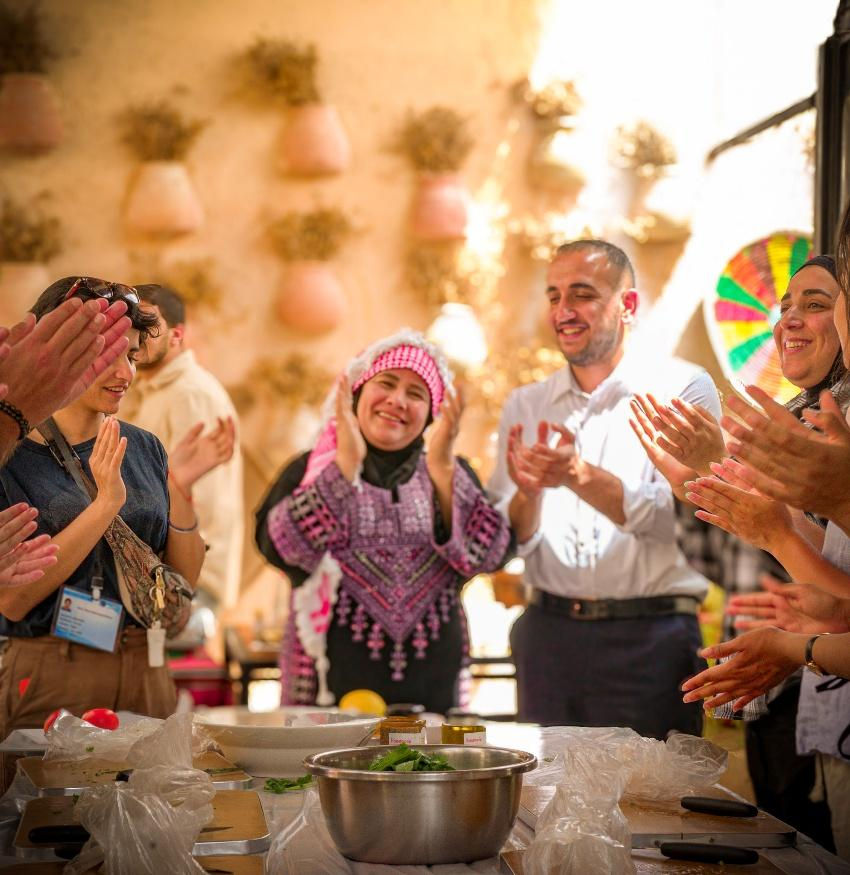
If you’re living abroad, especially as a military family or spouse, you have a unique opportunity to travel deeper and help reshape the story of places like Jordan.
Support the women at Beit Khayrat Souf. Book hikes through Farag and Baraka Destinations. Stay in ecolodges like Dana. Your presence sustains families, preserves traditions, and keeps cultural narratives alive.
Why You Should Travel to Jordan with Intention and Heart
In a deeper sense, this isn’t just about Jordan. It’s about how we travel.
Be intentional. Choose community experiences. Stay local. Eat local. Listen more than you speak.
When we travel with heart, travel gives back.
Organizations to Support
Baraka Destinations: www.barakadestinations.com
Planeterra Foundation: www.planeterra.org
Jordan Trail Association: www.jordantrail.org
Travel Resources for the Military Connected Community
Understanding Travel Visas for Jordan
Aircraft and Personnel Automated Clearance System
Theater Travel Requirements, Travel Tracker/Individual Antiterrorism Plan (TT/IATP)
US Department of State: Bureau of Consular Affairs
Traveling Deeper: Why International Travel Still Matters
My trip to Jordan reminded me why international travel isn’t just about going somewhere new; it’s about becoming someone new. It’s about the quiet moments between flights, the awkward translations that lead to belly laughs, and the chance to look at the world—and yourself, a little differently.
If Jordan lit a spark for you too, let that curiosity stretch beyond borders.
There’s something empowering about going it alone, and if you're considering that path, The Ultimate Guide to Solo Travel can help you feel ready. Or maybe you're craving more presence in your journeys—Embracing Slow and Mindful Travel is a great place to begin.
And it’s not just about where you go—it’s who you meet. Some of the best friendships I’ve ever made started in unfamiliar places, bonded over shared misadventures and the willingness to say “yes” to the moment. Building Lasting Friendships Through Shared Adventures dives into exactly that.
If you're itching for inspiration, these stories might open the next door for you:
Go river-deep into the wild with Into the Heart of Borneo
Taste your way through Bangkok
Find peace and play with your loved ones in Okinawa, Bali, or Phu Quoc
Witness the colors of culture in Sapa and Quang Phu Cau, Vietnam
Or walk through stories of history and resilience in Saipan or Taipei
Wherever you go next, go with heart. Go with wonder. Go knowing that the world is waiting to meet you, too.
Keep Exploring: Travel Stories That Go Beyond the Map
Jordan may have been the trip that stirred something deep within me, but it’s far from the only place that’s left its mark. Travel has a way of opening doors you didn’t know you needed to walk through—and I’ve been lucky enough to step through a few of them.
If this story resonated with you and you're curious about where else my passport and heart have wandered, I invite you to explore more of my journey on my blog, Kimberly Kephart Travels.
You’ll find my full Jordan itinerary and reflections there, along with stories of wandering cobblestone streets and chasing light across Europe:
Poland: where resilience echoes in every old town square
Italy: a love letter to slow mornings, strong coffee, and sun-drenched hills
France: equal parts art, charm, and tiny surprises
Spain: where flavor meets feeling and every moment is a celebration
And Asia: a region that continues to teach me how to see with fresh eyes
Each post is a piece of the journey—written with intention, curiosity, and a whole lot of heart.
So if you’re dreaming, planning, or just looking for a moment of escape, come join me. The world is big, beautiful, and full of stories worth telling.

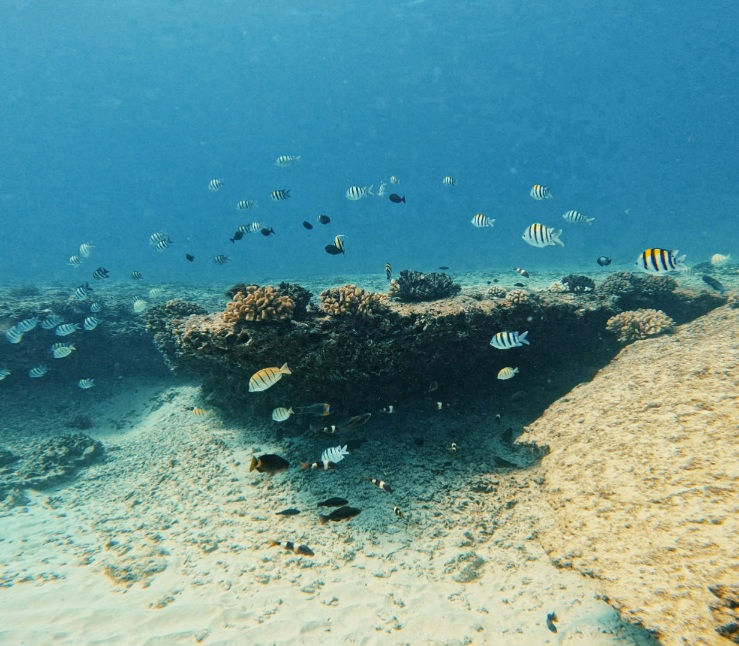


3 comentarios